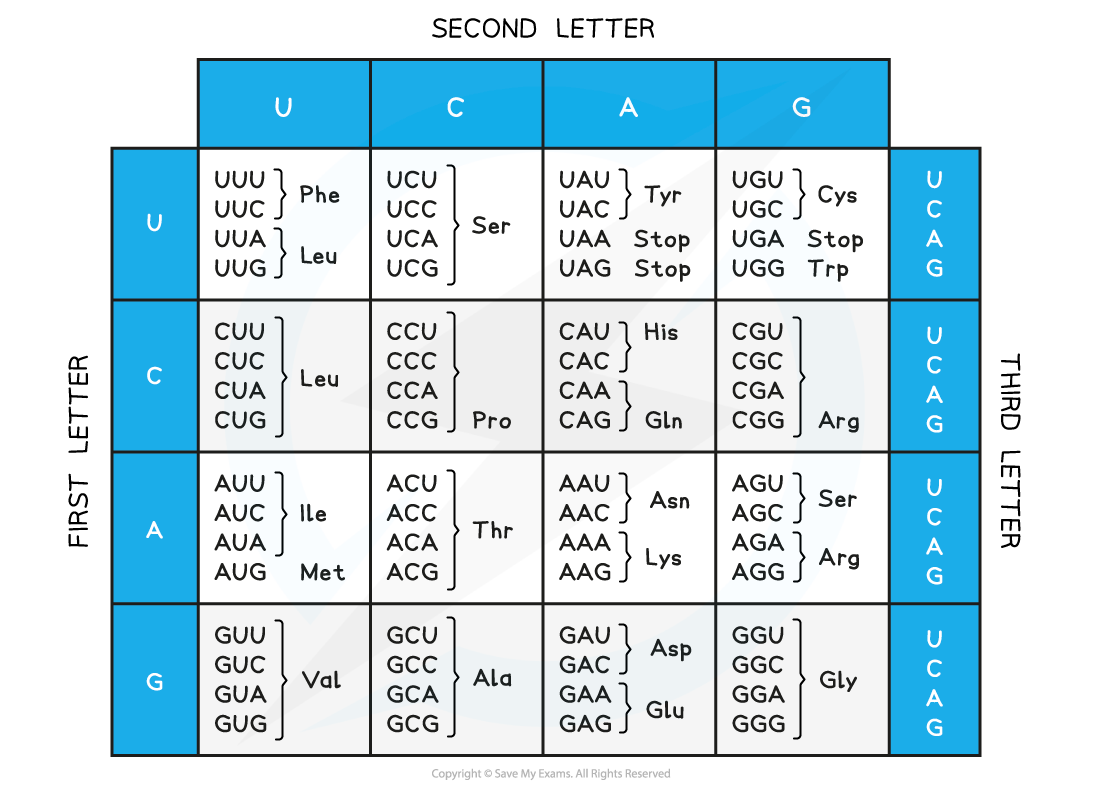Translation
- Translation is the synthesis of polypeptides on ribosomes
- This stage of protein synthesis occurs in the cytoplasm of the cell
- After leaving the nucleus, the mRNA molecule attaches to a ribosome
- A ribosome is a complex structure that is made of a large and small subunit
- Ribosomes are themselves made of proteins and RNA (called ribosomal RNA or rRNA)
- There are binding sites on the subunits for the various other molecules involved in translation
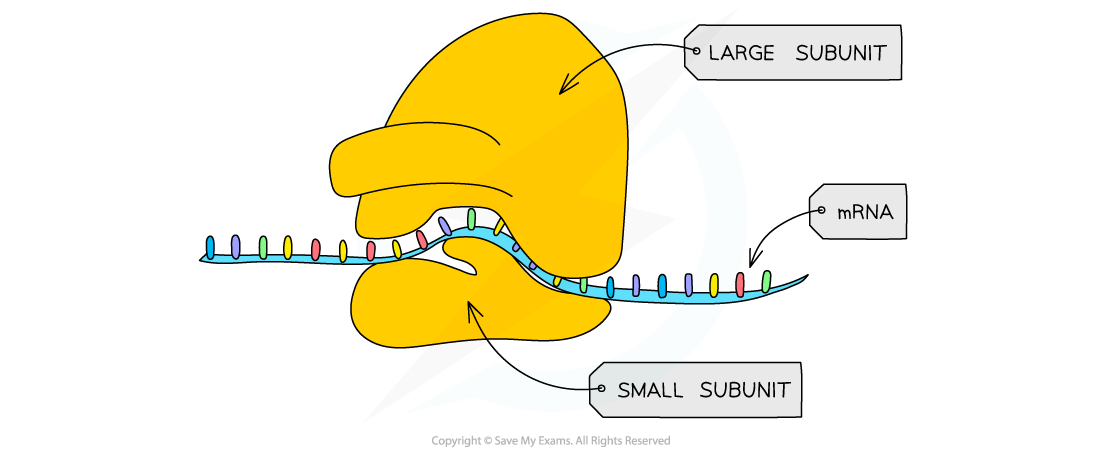
A ribosome is built of large and small subunits, ribosomal RNA and an area on the surface that catalyses the formation of peptide bonds in a newly-synthesised protein
Exam Tip
Make sure you learn both stages of protein synthesis fully. Don’t forget WHERE these reactions take place – transcription occurs in the nucleus but translation occurs in the cytoplasm!
Genetic Code & mRNA
- The amino acid sequence of polypeptides is determined by mRNA according to the genetic code
- mRNA varies in length, depending on the length of the gene, but is around 2,000 nucleotides long, on average (in mammals)
- Only certain genes are transcribed in a particular cell, depending on the function of that cell
- The gene for rhodopsin (a light-sensitive protein in the eye) is transcribed to mRNA in retina cells, but not transcribed in other body cells where rhodopsin is not required; that would be a waste of cellular energy
Exam Tip
Most RNA exists as mRNA but don't forget the other types; transfer RNA (tRNA) and ribosomal RNA (rRNA).
Codons
- Codons of three bases on mRNA correspond to one amino acid in a polypeptide
- The four nucleotide bases in mRNA are not enough to code for 20 separate amino acids
- Pairs of nucleotides would only give 16 combinations (42 = 16), which is still not enough
- Triplets of nucleotides would yield 64 combinations (43 = 64), which is more than enough
- Different triplets code for the same amino acid, giving some protection against mutation
- A triplet is a sequence of three DNA bases that codes for a specific amino acid
- A codon is a sequence of three mRNA bases that codes for a specific amino acid
- A codon is transcribed from the triplet and is complementary to it
- An anticodon is a sequence of three transfer RNA (tRNA) bases that are complementary to a codon
- The transfer RNA carries the appropriate amino acid to the ribosome
- The amino acid can then be condensed onto the growing polypeptide chain
- Certain codons carry the command to stop translation when the polypeptide chain is complete ('Stop codons')
mRNA Codons and Amino Acids Table
Worked Example
Use the rules of base-pairing and the mRNA Codons and Amino Acids Table (above) to deduce the amino acid sequence coded for by the following DNA sense strand sequenceTTC GAG CAT TAC GCC
Step 1: Work out the antisense sequence using A-T and C-G base pairing rules
AAG CTC GTA ATG CGG
Step 2: Work out the mRNA codons, complementary to the antisense strand
UUC GAG CAU UAC GCC
Step 3: Use the mRNA Codons and Amino Acids Table (above) to work out the first amino acid
First base in codon = U, second base = U, third base = C
So we're looking in the top-left box of the table; this amino acid is Phe
Step 4: Repeat for the remaining 4 codons
GAG = Glu
CAU = His
UAC = Tyr
GCC = Ala
Answer: The final sequence of amino acids is Phe-Glu-His-Tyr-Ala
Codons & Anticodons
- Translation depends on complementary base pairing between codons on mRNA and anticodons on tRNA
- In the cytoplasm, there are free molecules of tRNA (transfer RNA)
- The tRNA molecules bind with their specific amino acids (also in the cytoplasm) and bring them to the mRNA molecule on the ribosome
- The triplet of bases (anticodon) on each tRNA molecule pairs with a complementary triplet (codon) on the mRNA molecule
- Two tRNA molecules fit onto the ribosome at any one time, bringing the amino acid they are each carrying side by side
- A peptide bond is then formed (by condensation) between the two amino acids
- The formation of a peptide bond between amino acids is an anabolic reaction
- It requires energy, in the form of ATP
- The ATP needed for translation is provided by the mitochondria within the cell
- This process continues until a ‘stop’ codon on the mRNA molecule is reached – this acts as a signal for translation to stop and at this point the amino acid chain coded for by the mRNA molecule is complete
- This amino acid chain then diffuses away from the ribosome and forms the final polypeptide
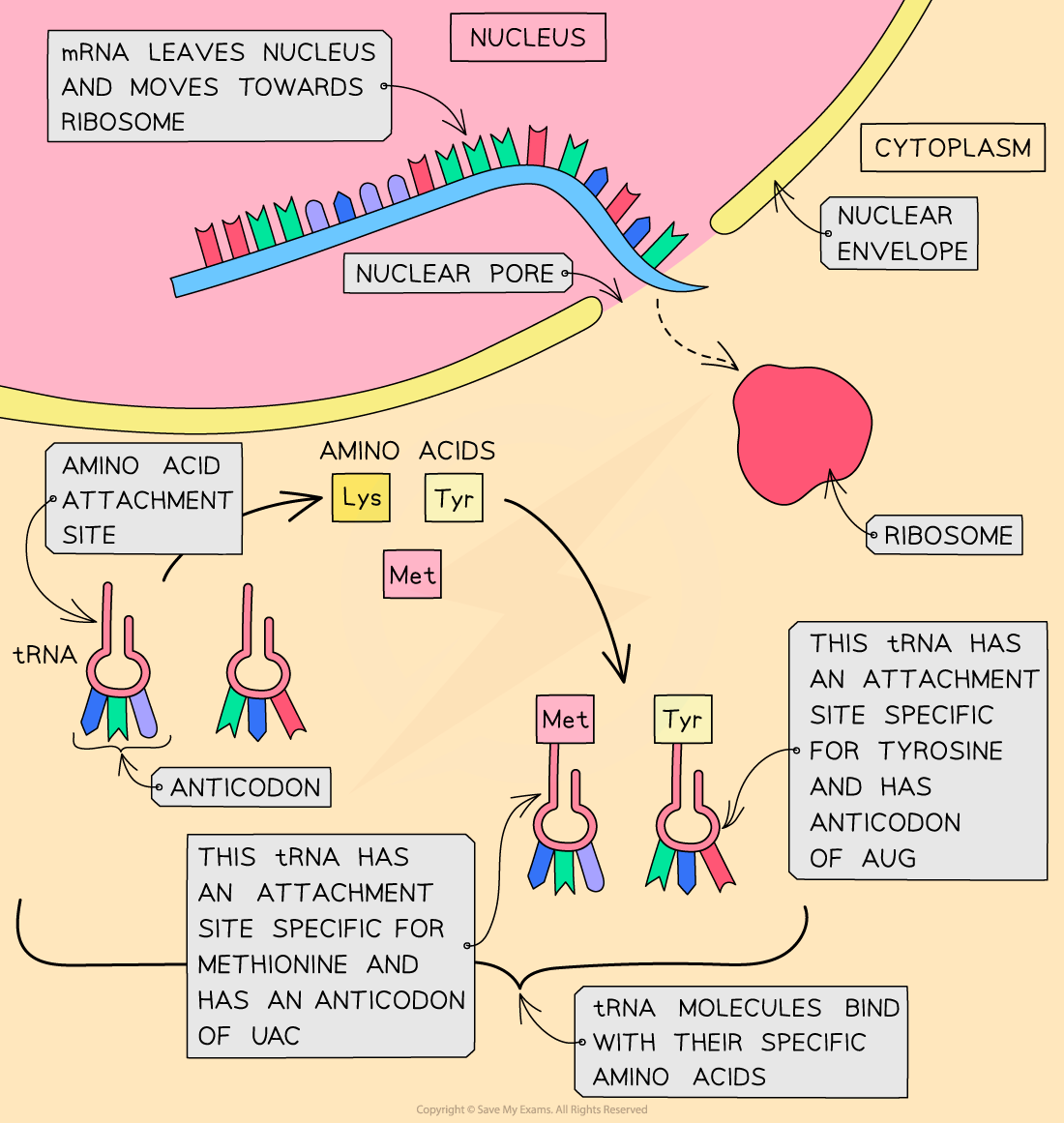
The translation stage of protein synthesis – tRNA molecules bind with their specific amino acids

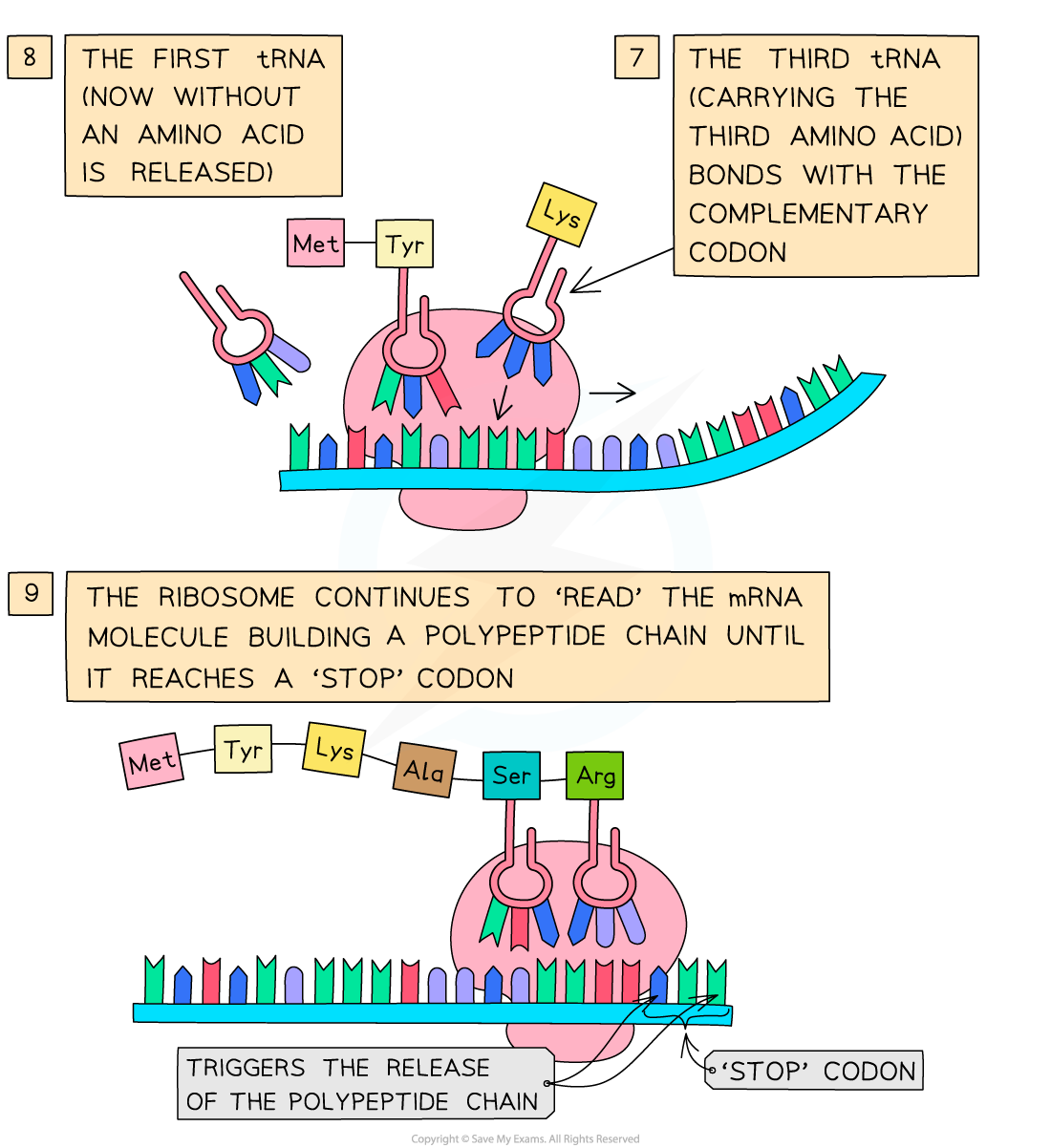
The translation stage of protein synthesis – an amino acid chain is formed
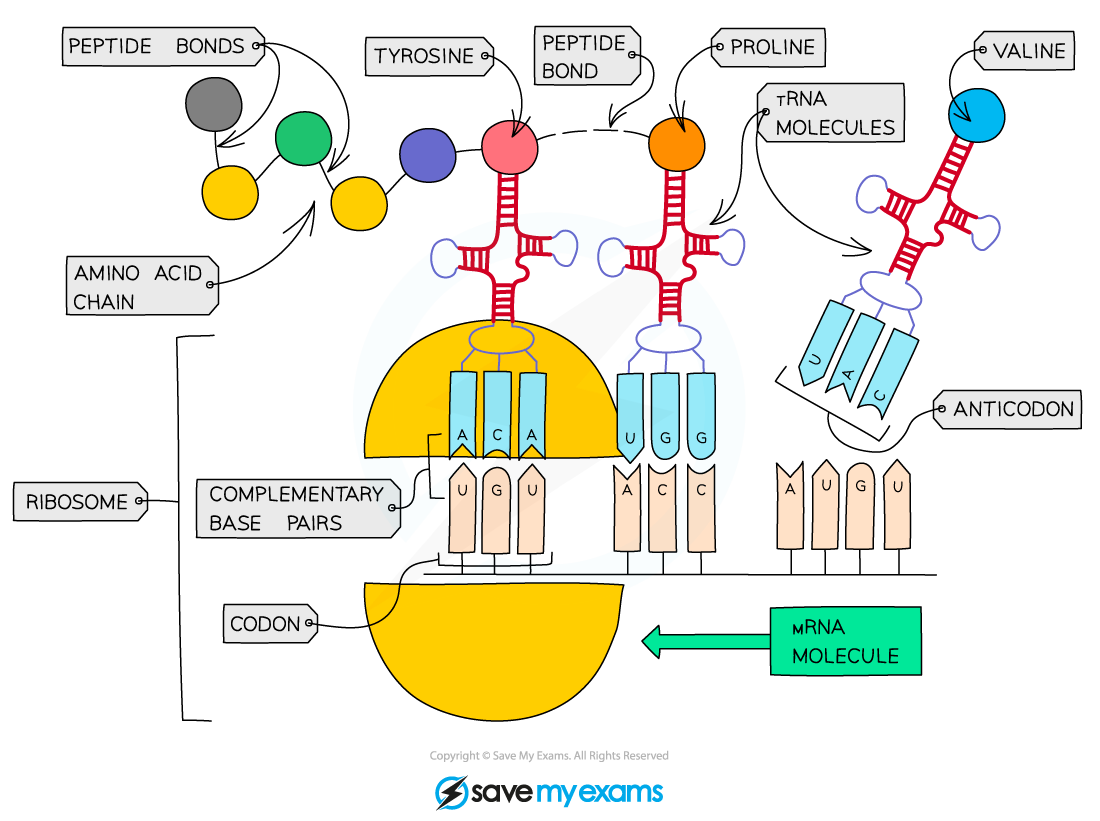
An polypeptide forms as peptide bonds are added in sequence
